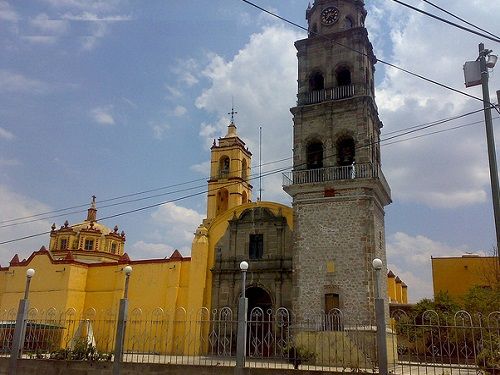
Excelente
490 Views
The Parish of San Juan was built at the end of the 18th century. Today only a side chapel dedicated to Jesus Christ remains. The later building, which is the parish church, dates back to the 18th century. The towers of both churches are made of grey stone. One of them is the tallest in the state and contains the largest bell in Tlaxcala. The semicircular entrance arch is decorated with doorways made of chimalli seeds and flowers.
Ixtenco or San Juan Ixtenco in the municipality of Tlaxcala is a town located on the slopes of Malinche south of Huamantla, its name means on the riverbank or on the shore, it has beautiful architectural monuments such as the Parish of San Juan was built at the end of the 18th century, the Chapel of the Virgin of Guadalupe the construction of this chapel dates back to the 16th and 17th centuries, the Hacienda San Antonio Cuauhtla the construction dates back to the 18th century and the Hacienda de San Cristóbal its construction dates back to the 18th century, the traditional annual festival is in honor of the patron saint Saint John the Baptist, the celebration begins nine days before the main day (June 24)
In the Municipality of Ixtenco, the groups of huehues dancing quadrillas are an essential part of the carnival celebrations. The musical accompaniment is provided by a brass band, the name of the musical sounds played always correspond to the plot of the representation known as the "plaza departure", "the embassies", "long and short battles", "laments", among others. The traditional clothing or costume is composed of shorts and a shirt made of cotton with embroidery in the form of a cross and a palm hat for men, and for women it is composed of an embroidered white blouse, a black skirt and a belt at the waist that is decorated with embroidery of a cross and beads, complemented by the traditional rebozo. The traditional annual festival is in honor of the patron saint San Juan Bautista. The celebration begins nine days before the main day (June 24) with the so-called novenario.